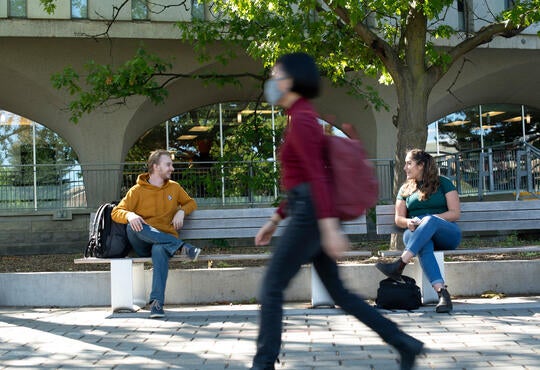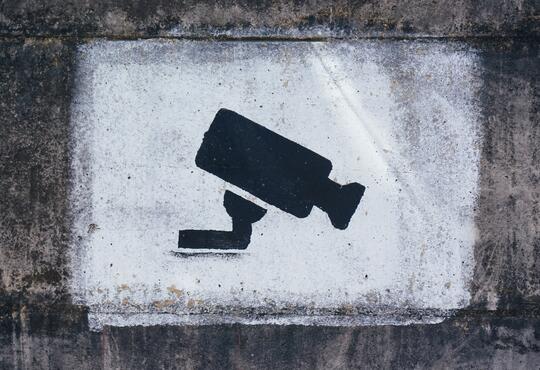How will 5G technology change the way we work and play? What does the growth of the Internet of Things mean to education, health care, private life? Will this new form of interconnectivity benefit everyone, or will some find themselves left behind?
And what is the Internet of Things, anyway?
For thoughts on these questions and more, the University of Waterloo invites you to attend “Humans and Interconnectivity,” a virtual panel discussion and networking lunch-hour event on September 24 to explore the promise—and challenges—of the increasing interconnectivity that comes with 5G technology and the Internet of Things.
Christine McWebb, Director of the Stratford School of Interaction Design and Business, will moderate a conversation between Jorge Fernandes, Chief Technology Officer, Rogers Communications; Leah Zhang-Kennedy, assistant professor in Interaction Design and User Experience at the Stratford School; and Catherine Burns, professor in Systems Design Engineering and Canada Research Chair in Human Factors and Healthcare Systems at the University of Waterloo.
To get a handle on the topic and a taste of the discussion to come, we turned to professors McWebb and Zhang-Kennedy.
 “We are firmly embedded, right now, in the era of 4G connectivity technologies,” says McWebb. “Historically, about every ten years there is a new generation invented, perfected and implemented. So, it’s safe to say that the next ten years will be predominantly about 5G.” 5G’s rapid speed “enables many, many more services than are available right now, because we are no longer limited to the capacity of say, one cell tower,” she explains.
“We are firmly embedded, right now, in the era of 4G connectivity technologies,” says McWebb. “Historically, about every ten years there is a new generation invented, perfected and implemented. So, it’s safe to say that the next ten years will be predominantly about 5G.” 5G’s rapid speed “enables many, many more services than are available right now, because we are no longer limited to the capacity of say, one cell tower,” she explains.
That speed supports and is generated by the Internet of Things: “With 5G, devices themselves can become cell towers. And that is what we mean by the Internet of Things,” McWebb says. “It’s not just one device that’s responsible for connecting devices to each other; any device that is connected can potentially become a node, spreading signals to other devices.”
How will this increasing interconnectivity affect our relationships to each other and to the world around us? And how is it different from plain old connection? “Connection is dual—back and forth—while interconnectivity is broader, with multiple ways out and multiple ways in,” McWebb adds.
Zhang-Kennedy adds, “As human beings, we’re always craving connection with other individuals. To me, interconnectivity is more about the technology that enables connection. But it can also be disabling. For example, online hate and cyberbullying can be crippling and cause a lot of harm. These challenges need to be considered, but there is also lots of opportunity for furthering social good — and we’ll be exploring both aspects in the panel.”
Even though there will be more connectivity, it’s going to become more invisible.
 As for its impact on daily life, Zhang-Kennedy explains, “Everything is going to be wireless. Wireless connectivity will become so embedded in everyday life that even though there will be more connectivity, it’s going to become more invisible because it will be embedded into everyday objects: our thermometers, lamps, refrigerators, but also, say, the lights on our streets.”
As for its impact on daily life, Zhang-Kennedy explains, “Everything is going to be wireless. Wireless connectivity will become so embedded in everyday life that even though there will be more connectivity, it’s going to become more invisible because it will be embedded into everyday objects: our thermometers, lamps, refrigerators, but also, say, the lights on our streets.”
To use an example in development at the Stratford School: Zhang-Kennedy’s students worked with Rogers as an industry partner to develop a capstone project that, through 5G, can give public transit users access to real-time information about businesses, services, and historical and cultural features along their route. Riders can consult an interactive, zoomable map at transit stops, download the same map as an app, or—more futuristically—information can be displayed directly on vehicle windows made of smart glass.
Professor Burns will bring expertise on the possibilities 5G opens up for healthcare beyond hospital walls, such as access to care for remote communities and patient monitoring through wearable technology. Fernandes will help the panel explore the issue of the digital divide between the northern and southern hemispheres and locally within Canada. Broadband technology has begun to address that divide, “but what does that look like under 5G?,” asks McWebb. “Is it going to mitigate the divide, or is it going to make it worse?” The panel discussion will also consider ethics in design as innovators explore the new possibilities opened up by 5G technology.
Join us over lunchtime on September 24, 2021, for Humans and Interconnectivity, presented by Alumni Relations in collaboration with the Faculty of Arts.
- Networking 11:45-12:00 p.m. ET
- Panel discussion 12:00-1:00 p.m. ET
- Extended Q&A and Networking 1:00-1:30 p.m. ET







